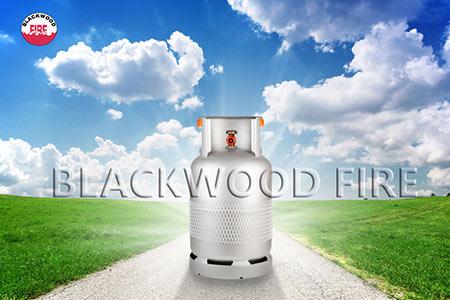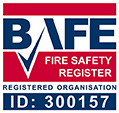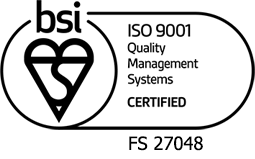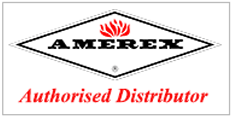Flammable liquids
Containers should be stored in the open air where practical, but if stored inside, five air changes per hour is considered a sufficient ventilation rate.
Flammable liquids
Containers should be stored in the open air where practical, but if stored inside, five air changes per hour is considered a sufficient ventilation rate.
- Standard 205 litre metal drums should be stacked no more than three high and preferably on pallets or racking.
- The maximum stack size should be 300,000 litres with at least 4 metres between stacks.
- Storage should be on an impervious surface such as concrete and be bunded with drainage towards a sump or other suitable handling system.
LPG cylinders
 Cylinders should be stored preferably in the open air on a concrete or load-bearing surface.
Cylinders should be stored preferably in the open air on a concrete or load-bearing surface.
- Flammable liquids, combustible, corrosive, oxidising materials, toxic materials or compressed gas cylinders should, in general, be kept separate from LPG containers.
- Containers should be stored with their valves uppermost.
- The maximum size of any stack should not exceed 30,000kg.
- For storage indoors, no more than 5000kg may be stored in each purpose designed building compartment and a maximum of five compartments may exist in a single building.
Chlorine cylinders
 The vast majority of chlorine cylinder and drum stores are located indoors and should be solely used for storing chlorine.
The vast majority of chlorine cylinder and drum stores are located indoors and should be solely used for storing chlorine.- Access doors should fit closely to help contain any leak.
- These stores should be protected from any nearby radiant heat hazards.
- The store should be at least 5 m from any roadway.
- A cylinder store should be at least 20m from the site boundary and a drum store 60m.
- Chlorine gas detectors / alarms should normally be provided.
- Risk assessments should be carried out to consider hazards arising from mishandling (dropping of containers in transport/handling), incorrect operation of valves and failure to connect correctly, maintenance errors and damage by external sources (domino, vehicle impacts, etc.)
The content on this page contains public sector information licensed under the Open Government Licence v3.0.
Please note that any images forming part of this advice article are for illustrative purposes only and may not be indicative of colours, labelling or markings relating to any country specific legislation, guidelines or standards. Written information and guidance relate to the United Kingdom and specifically to information provided by the Health and Safety Executive (HSE) and other UK public sector bodies.
Information herein is primarily provided for the purposes of managing fire risk. However, in order to give the reader a more complete understanding of the storage and handling of toxic and flammable substances in drums and cylinders, we have provided additional information. If you need specific advice or information on matters not directly related to fire risk management, you should consult an expert with the appropriate knowledge and/or the supplier or manufacturer.
Disclaimer: INFORMATION PROVIDED ON THIS WEBSITE IS NOT INTENDED TO BE TREATED AS PROFESSIONAL ADVICE AND SHOULD NOT UNDER ANY CIRCUMSTANCES BE USED AS A SUBSTITUTE FOR PROFESSIONAL ADVICE. ALWAYS CONSULT A FIRE PROFESSIONAL, OR OTHER RELEVANT PROFESSIONAL, FOR ADVICE ON YOUR PARTICULAR CIRCUMSTANCES AND REQUIREMENTS.





 Blackwood Fire began trading in 1983. We have an absolute belief in quality - it is the cornerstone of our company's culture. Our primary aim is to help you protect the lives and livelihoods of people and your organisation or business by ensuring that we only provide quality products that fully meet industry standards - also, by providing continuous training to our staff via recognised trade bodies, associations and the British Standards Institute (BSI). We strongly believe that promoting quality practices and dealing with everyone in a fair and honest manner adds value to organisations and businesses. Read more on our
Blackwood Fire began trading in 1983. We have an absolute belief in quality - it is the cornerstone of our company's culture. Our primary aim is to help you protect the lives and livelihoods of people and your organisation or business by ensuring that we only provide quality products that fully meet industry standards - also, by providing continuous training to our staff via recognised trade bodies, associations and the British Standards Institute (BSI). We strongly believe that promoting quality practices and dealing with everyone in a fair and honest manner adds value to organisations and businesses. Read more on our 